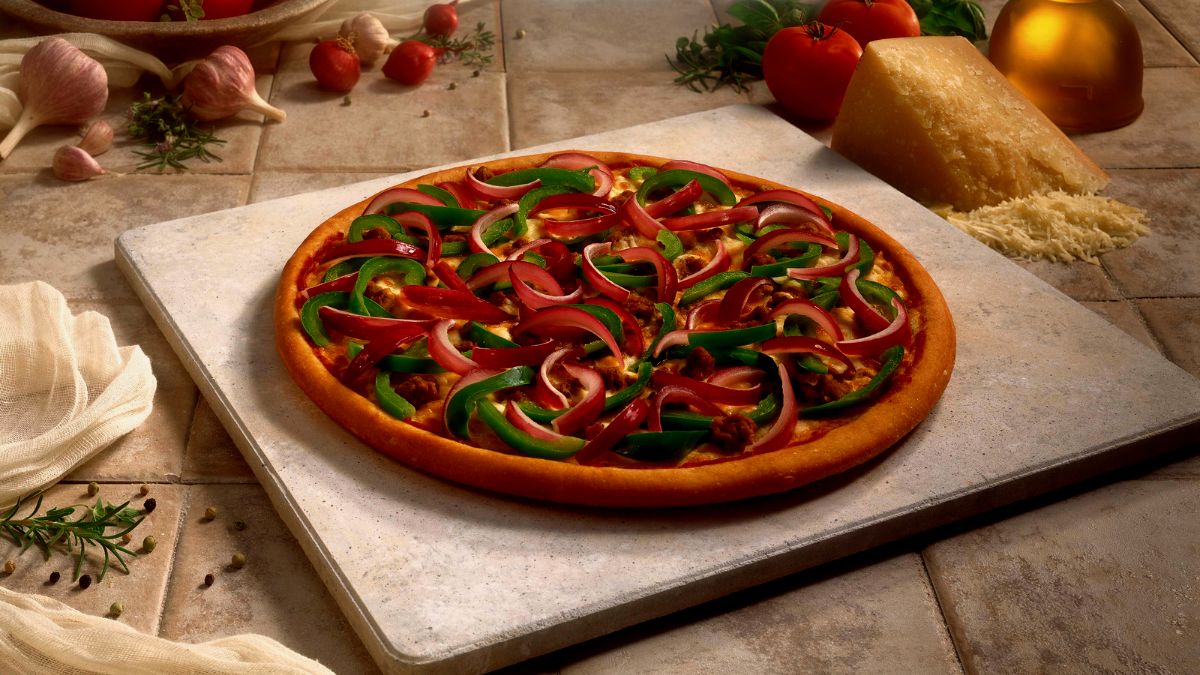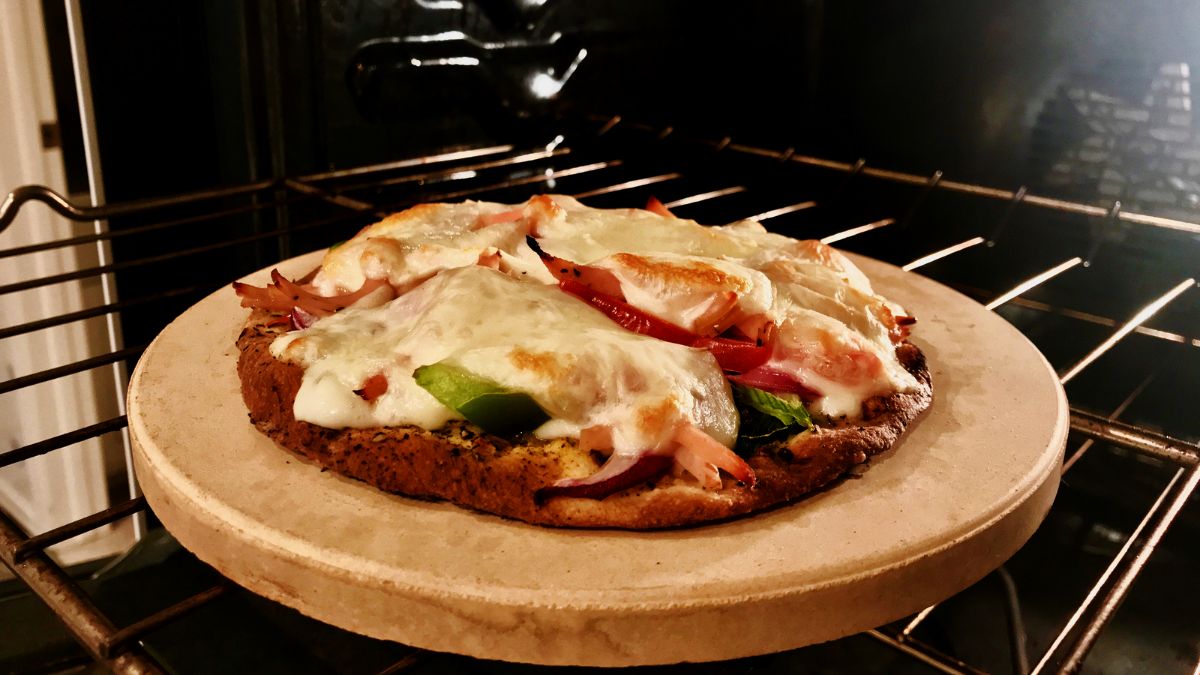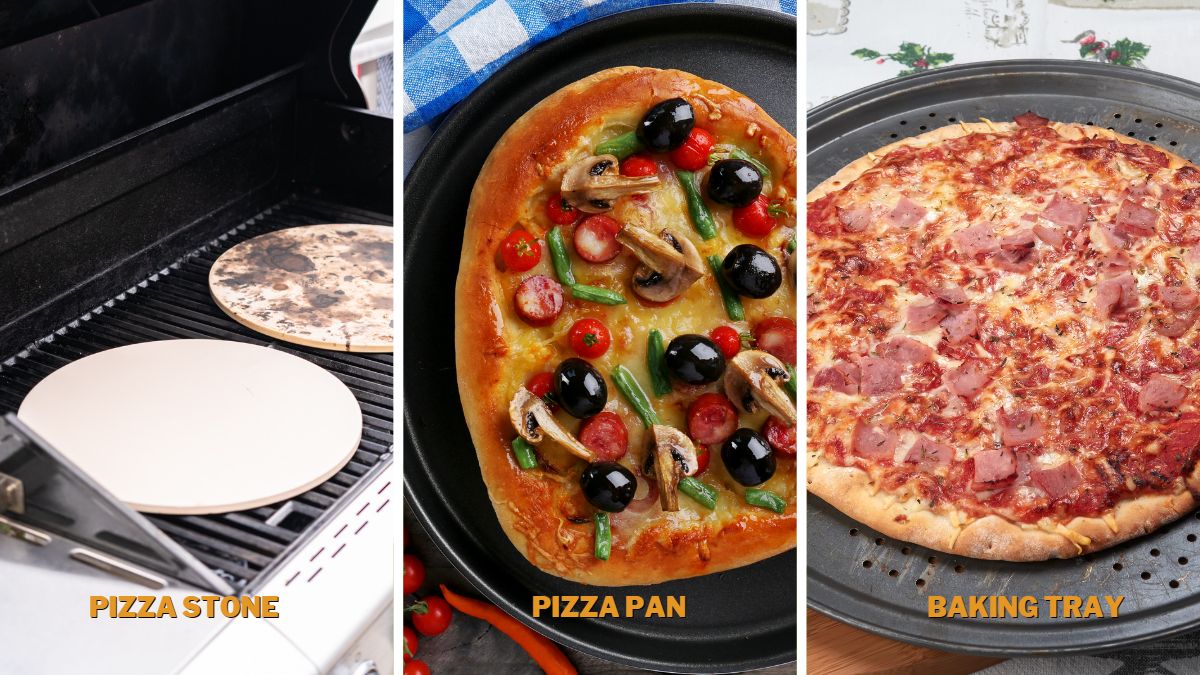Can You Bake Frozen Pizza on Pizza Stone? Here’s How!

Pizza stones are excellent tools for pizza baking. They are known as slower conductors of heat, but they bake the pizza equally and thoroughly and give it a certain charm that the pizza doesn’t get from a regular pizza pan. However, pizza trays are mainly used for baking freshly made pizza dough, which is excellent but restrictive. So can you bake frozen pizza on a pizza stone?
Pizza stones can be used to bake a frozen pizza. In fact, using a pizza stone is an excellent method to bake frozen pizza, as it will gradually thaw it and won’t burn it or overbake it at some place while leaving it underdone in some.
Pizza stones are a known efficient method to cook a frozen pizza. While other methods can leave your frozen pizza soggy, pizza stones make it pretty flawless. In the following paragraphs, I will explain how to bake frozen pizza on a pizza stone and give you some additional information on pizza stones.
How to Bake Frozen Pizza on Pizza Stone?
Baking frozen pizza on a pizza stone is a fairly simple procedure, but you do have to know what you are doing; otherwise, your endeavor won’t be as successful as you had hoped.
Baking an entirely frozen pizza on a baking stone produces bad results. Your frozen pizza will become gooey, and the pizza stone will lose its point. So, you first need to let your pizza thaw for a while, not entirely defrost, but until it is no longer frozen solid.
The more frozen your pizza is, the more steam it will produce while baking. Since the steam will circulate in your oven and the pizza stone will produce direct heat on the pizza, it will dry out the pizza, causing the steam to absorb quickly into the dough. Consequently, you will get a paradox pizza that is gooey and moist and, at the same time, lacking in juiciness.
Therefore, let the pizza soften and place it on the pizza stone once it is soft enough to flip. The pizza stone has its philosophy, too, and you cannot just place the pizza on a cold pizza stone.
Preheat the oven to the highest temperature and place the pizza stone inside to heat up. The stone should be as hot as possible when you place the pizza on it. Don’t lower the temperature, as the direct heat from the pizza stone won’t match the surrounding temperature in the oven.
Place the pizza stone on the middle rack in the oven. Don’t place it too low or too high, as the pizza will likely burn on the top or the bottom if you place it too close to either of the heaters.
The baking process should take from six to eight minutes, depending on how baked you want your pizza. Applying all of the abovementioned procedures will give you a delicious and evenly baked frozen pizza.

Once your pizza is baked, remove the pizza stone from the oven and place it onto a folded cotton towel or several stacked cotton towels. The pizza stone will be very hot, so don’t place it on any surface that it could damage. Don’t put it on the cold stove plates, as the pizza stone will likely break due to the sudden temperature change.
Are Pizza Stones Worth It for Frozen Pizza?
Pizza stones are a great way to bake pizza as they do a good job substituting for a pizza oven, and they are worth it.
Pizza ovens work by applying direct heat onto the pizza, which is just what a pizza stone does. Considering that pizza stones can vary in price from $20 to over $100, and you can find a pretty good pizza pan for under $15, pizza stones are considerably pricier but not overly expensive.
However, there are several types of pizza stones. They can be made of ceramics, clay, cast iron, or cordierite. The ceramic and clay pizza stones are the cheapest, but they are also the ones that are most likely to break due to the high temperature. Nevertheless, they make great pizzas.
The cast iron and cordierite pizza stones are firmer and more resistant to heat, and they are less likely to break, if not impossible, and are highly recommended by pizza-makers. The cheapest are the ceramic and clay ones, and the other two are more expensive.
Although pizza stones aren’t necessary to bake good pizzas, they are certainly a desirable pizza-making tool that can largely increase the pizza quality. On the downside, they do need some getting used to since they are a bit more particular than regular pizza trays.
Nevertheless, they aren’t overly complicated, and after one or two tries, you will get the hang of pizza baking on a pizza stone.
What Is the Best Way to Bake Frozen Pizza?
When baking a frozen pizza, it is always a good idea to read the instructions on the box. However, in addition to the instructions, there are some general tips you can use to successfully bake a frozen pizza.
First and foremost, you need to let it thaw for a while. Don’t let it thoroughly defrost, but don’t bake it frozen solid. When the pizza gets soft enough to flip in half, that’s the right time to pop it into the oven.
You can use a pizza stone for baking it on, a pizza steel, a regular pizza pan, or a baking tray. However, you shouldn’t use parchment paper, as your pizza will be moist at the bottom. Therefore, place it directly onto the surface you will be using.
If you are afraid it will stick, which is unlikely to happen, you can sprinkle some flour onto the pizza tray/pan/stone to ensure that the pizza won’t stick and won’t get overly moist on the bottom. Another thing to be mindful of is the temperature.
Pizza doesn’t do well at low temperatures or by gradually increasing the temperature, and it is best to bake the pizza at a high temperature and not change it during baking. Moreover, pop the pizza in a preheated oven, so it is hot.
Once you put the pizza into the oven, don’t open it for five to six minutes so that hot air doesn’t escape. Once the initial five or six minutes have passed, you can open the oven to check the pizza. If you like it, take it out, and if not, leave it for two to three minutes.
If you have a convection mode on your oven, turn it on, as the hot air will circulate even better. It is important to remember to place the pizza on the middle rack to prevent it from burning on the bottom or the top.

What Else Is Pizza Stone Good For?
You can use pizza stones for other things besides baking pizza. In fact, you can use pizza stones for virtually anything you want to bake; the only requirement is for what you are baking to be dry. So, you cannot bake dishes that are very juicy or runny; otherwise, you are good to bake anything you want.
For example, pizza stones are excellent for searing meat slices or fish fillets. The heat that pizza stones radiate makes them an excellent substitute for brick ovens, so searing meat or fish is a great idea to use pizza stones.
Another way to use pizza stones is to roast veggies on them. Potato, carrot, or onion slices do great when sizzled on a pizza stone. You can also use pizza stones to toast bagels or bread for sandwiches.
Baking flatbread is another excellent way to use pizza stones and baking cookies. You can also bake chicken or turkey slices using pizza stones.
What Kind of Pizza Stone Is the Best Kind?
There are four types of pizza stones, clay, ceramic, cast iron, and cordierite. They all have downsides and advantages, but the cordierite is the best one. Cordierite is actually a mineral that is very resistant and very durable.
While clay or ceramic pizza stones tend to break due to the temperature shock, cordierite pizza stones are considered the most heat resistant. Moreover, due to their nature, the heat spreads into these pizza stones as a spiral, not heating the entire surface simultaneously.
This spiral spreading of the heat protects these pizza stones from breaking as it spreads gradually.
Nevertheless, the other three types of pizza stones are also very effective, though there is a risk of breaking.
Does Pizza Taste Better on Pizza Stones?
Since pizza stones mimic a traditional brick pizza oven, they produce a different-tasting pizza than regular pizza pans or trays. The pizza made in a pizza stone has a smoky flavor and tends to be more flavorful than the pizza made in a regular pizza pan or tray.
Still, the taste is highly subjective, so some people find pizza made in a pizza pan/tray more delicious, but generally, pizza stones make better-tasting pizzas.
